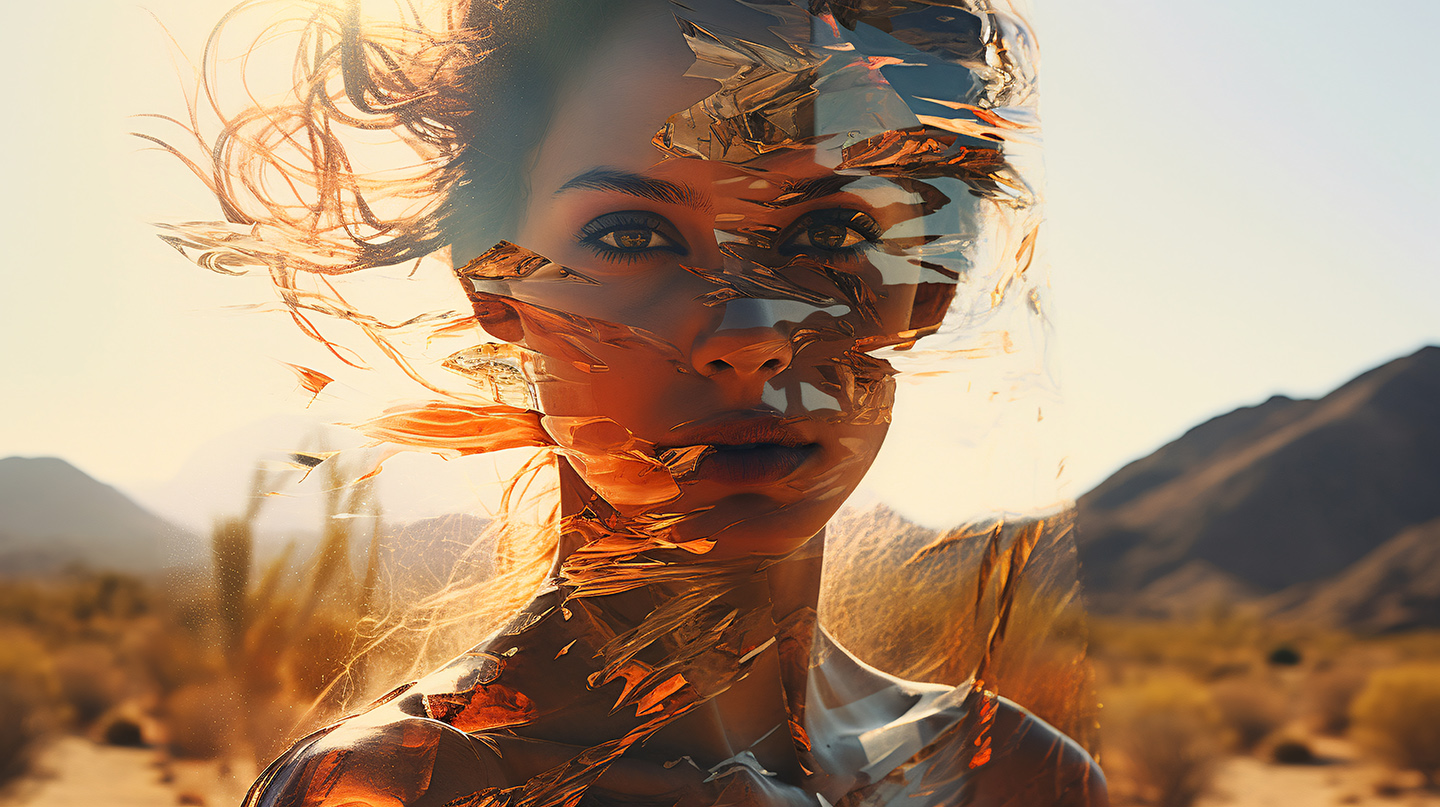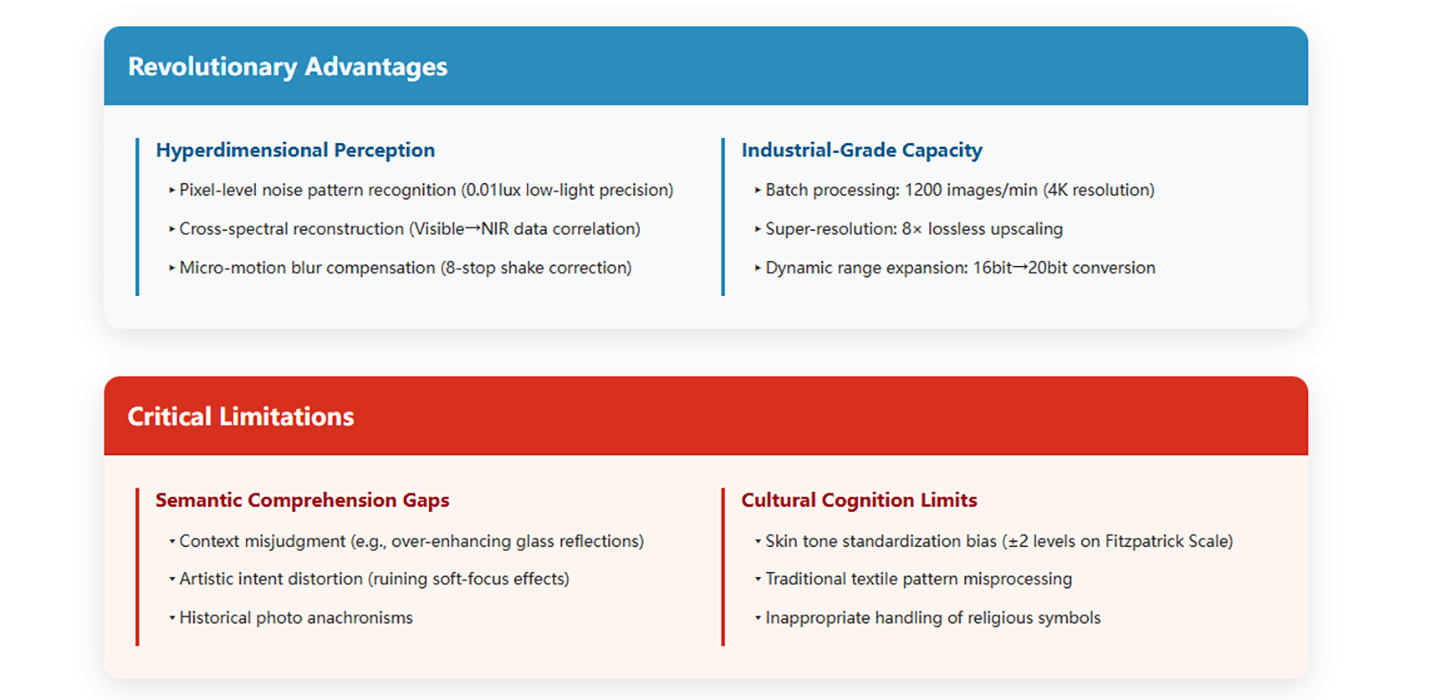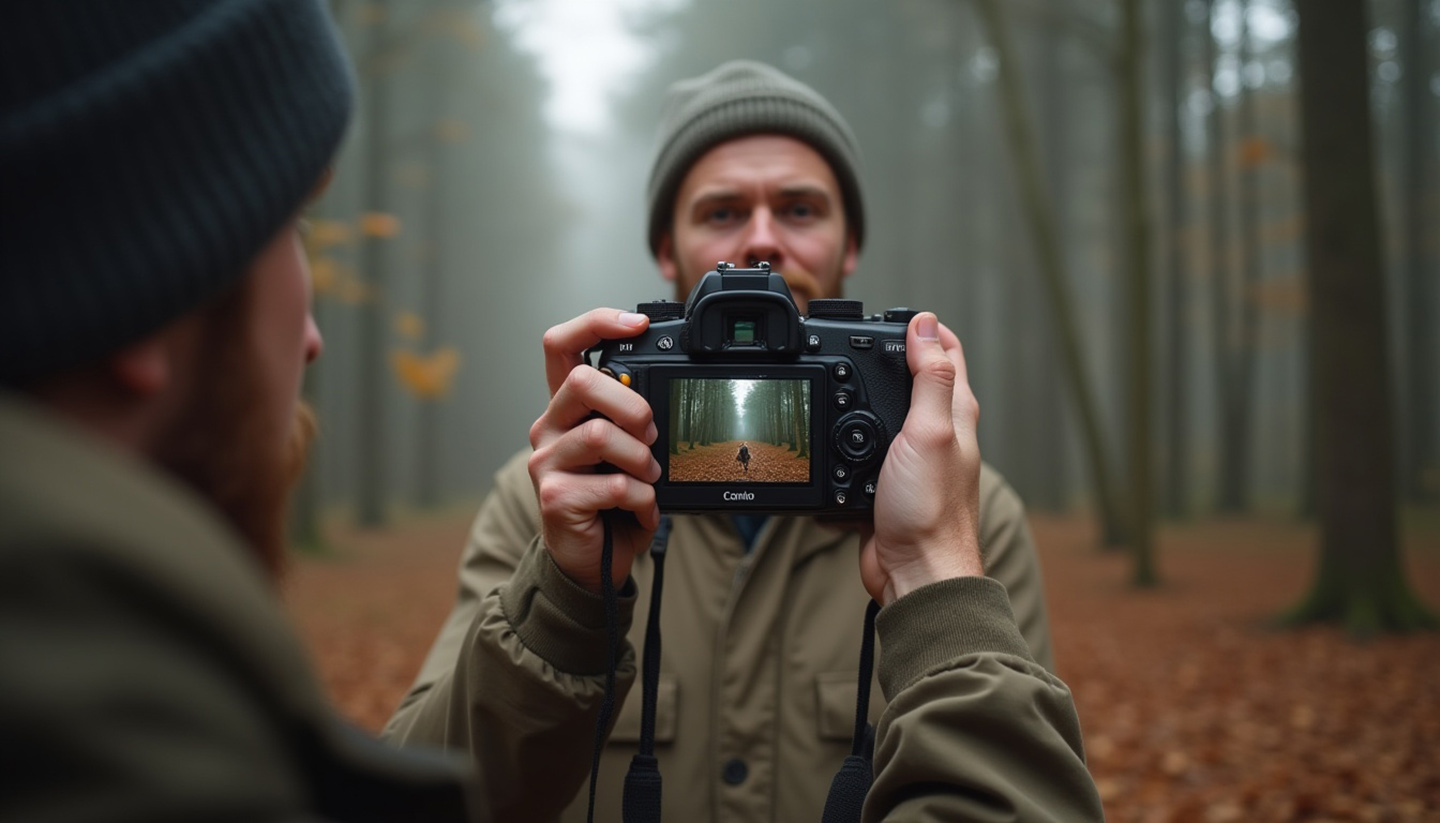Visual dominance now dictates success—brands that fail to captivate with stunning imagery are instantly forgotten. AI Photo Enhancers have surged to the forefront, not just fixing flaws but fabricating perfection. The process is instant, seamless, and, to some, disturbingly sterile. Are we witnessing an evolution of creativity, or the quiet death of human touch in digital art?
What’s unfolding isn’t merely innovation—it’s a creative coup. With each new AI enhancement, the role of the artist shrinks a little more. The messy beauty of trial, error, and emotional nuance is being replaced by clinical efficiency. This isn’t just a tool; it’s a turning point. Are we co-creating with machines—or ceding control entirely? The line between collaborator and competitor has never been thinner.

How Did AI Photo Enhancer Evolve From Simple Filters to Sophisticated Enhancement Tools?
The Humble Beginnings: When Photo Enhancement Was Just Basic Filtering
The journey of AI Photo Enhancer technology began in the early 2000s with rudimentary algorithms that could barely handle basic tasks. Remember those early digital cameras that produced grainy, poorly lit images? The first generation of photo enhancer AI tools was essentially glorified sharpening filters with limited noise reduction capabilities.
Companies like Adobe pioneered the initial wave with simple automated adjustments in Photoshop, but these early systems were rule-based rather than truly intelligent. They could brighten an image or adjust contrast, but they couldn't understand context or make sophisticated decisions about what an image actually needed.
The Deep Learning Revolution: When AI Enhancer Photo Technology Got Smart
The real breakthrough came around 2012 with the advent of convolutional neural networks (CNNs). This wasn't just an incremental improvement—it was a complete reimagining of how machines could understand and manipulate images. Companies like Google, with their Deep Dream project, and startups like Topaz Labs began demonstrating that AI could actually "see" and understand image content.
The introduction of Generative Adversarial Networks (GANs) in 2014 marked another pivotal moment. Suddenly, AI photo enhance technology could generate new pixel information rather than just manipulating existing data. This meant that a blurry photo could be transformed into a sharp image by intelligently predicting what the missing details should look like.
Current State: The Sophisticated Photo AI Enhancer Ecosystem
Today's AI Photo Enhancer tools leverage multiple advanced technologies:
Super-Resolution Neural Networks: These systems can upscale images by 4x or even 8x while maintaining incredible detail. Companies like Real-ESRGAN and Waifu2x have made this technology accessible to consumers.
Denoising Algorithms: Modern AI can distinguish between image noise and actual detail with remarkable precision, preserving important features while eliminating unwanted artifacts.
Content-Aware Enhancement: Current systems understand semantic content—they know the difference between a face, a landscape, and text, applying appropriate enhancement techniques to each.
Real-Time Processing: What once took hours can now be accomplished in seconds, thanks to optimized neural network architectures and improved hardware acceleration.
What Are the Game-Changing Advantages and Critical Limitations of AI Photo Enhancer?
Why AI Photo Enhancer Outperforms Human Editors in Many Scenarios
The superiority of AI in photo enhancement isn't just about speed—it's about consistency and capability. Here's where photo enhancer AI truly shines:
Superhuman Pattern Recognition: While a human editor might miss subtle noise patterns or inconsistencies, AI processes every pixel with mathematical precision. It can identify and correct issues that would take a human hours to spot, if they notice them at all.
Consistent Quality Standards: Human editors have good days and bad days. They get tired, distracted, or simply have different aesthetic preferences. AI maintains the same quality standards across thousands of images, ensuring brand consistency that's nearly impossible to achieve manually.
Handling Impossible Tasks: Try asking a human editor to enhance a 100x100 pixel image into a crisp 800x800 photo. They'll laugh and walk away. AI enhancer photo technology can actually reconstruct detail that wasn't originally captured, using learned patterns from millions of similar images.
Processing Speed: What takes a skilled human editor 30 minutes to accomplish, AI can do in 30 seconds. This isn't just convenient—it's economically transformative.
The Critical Limitations: Where AI Photo Enhance Technology Still Falls Short
Despite its impressive capabilities, AI Photo Enhancer technology has significant blind spots that we often overlook:
Context Misunderstanding: I've seen AI systems enhance reflections in glasses so much that they become the focal point of a portrait, or sharpen background elements that should remain soft for artistic effect. AI understands pixels, not artistic intent.
Hallucination Problems: When AI generates detail that wasn't originally present, it's making educated guesses. Sometimes these guesses are wrong, creating "phantom" details that look convincing but are completely fabricated.
Style Inconsistency: While AI can enhance technical quality, it struggles with maintaining consistent artistic style across a series of images. A human editor understands the overall aesthetic vision of a project.
Cultural and Contextual Blindness: AI systems trained primarily on Western imagery may not properly handle images from other cultures, potentially making inappropriate adjustments to skin tones, facial features, or cultural elements.

How Is AI Photo Enhancer Disrupting Traditional Industries?
The Positive Transformation: Industries Embracing AI Enhancement
The impact of photo AI enhancer technology extends far beyond simple convenience. Let's examine how different sectors are being revolutionized:
E-commerce Revolution: Online retailers are using AI to automatically enhance product photos, reducing the need for expensive photo shoots.
Real Estate Transformation: Property photographers are using AI to enhance lighting, remove unwanted objects, and even virtually stage empty rooms. This has democratized professional-quality real estate photography, making it accessible to smaller agencies.
Social Media Content Creation: Influencers and content creators can now produce professional-quality visuals without hiring photographers or learning complex editing software. This has leveled the playing field for emerging creators.
Medical Imaging Enhancement: In healthcare, AI photo enhance technology is helping doctors analyze X-rays, MRIs, and other medical images with greater clarity, potentially saving lives through improved diagnosis.
The Disruption Dilemma: Industries Under Threat
However, this technological advancement comes with a darker side that we must acknowledge:
Photography Studios Facing Obsolescence: Traditional photography studios, especially those focused on basic portrait or product photography, are losing clients to AI-enhanced smartphone photography and automated solutions.
Graphic Design Commoditization: Basic photo editing and enhancement work that once required skilled designers is now being automated, forcing professionals to compete with algorithms that work for pennies.
Stock Photography Devaluation: Why pay for professional stock photos when AI can enhance user-generated content to professional standards? This trend is devastating the stock photography industry.
Quality Control Job Losses: Companies that once employed teams of people to manually review and enhance images are replacing them with AI systems that can process thousands of images simultaneously.
Adaptation Strategies: How Threatened Industries Can Survive
The solution isn't to fight the technology—it's to evolve with it. Here are practical strategies for industries facing AI disruption:
Embrace AI as a Tool, Not a Threat: Smart photographers are using AI Photo Enhancer technology to handle routine tasks, freeing up time for creative work that AI can't replicate.
Focus on High-Value Services: Instead of competing on basic enhancement, professionals should focus on creative direction, storytelling, and complex problem-solving that requires human insight.
Develop AI Literacy: Understanding how AI works allows professionals to better integrate it into their workflows and offer hybrid human-AI services.
What Ethical Dilemmas Does AI Photo Enhancer Create?
The Copyright Conundrum: Who Owns AI-Enhanced Images?
One of the most contentious issues surrounding AI Photo Enhancer technology is intellectual property. When AI enhances an image, who owns the result? The original photographer? The AI company? The person who ran the enhancement?
This isn't just academic—it's creating real legal problems. I've seen cases where enhanced images have been used commercially without permission, with parties arguing that the AI enhancement created a derivative work that's no longer subject to the original copyright.
The Training Data Problem: Most AI systems are trained on millions of images scraped from the internet, often without explicit permission from the original creators. This means that every AI-enhanced image potentially incorporates elements learned from copyrighted works.
Privacy and Security Risks: The Hidden Dangers of AI Enhancement
When you upload an image to an AI Photo Enhancer service, you're often surrendering more control than you realize:
Data Retention Policies: Many AI services retain uploaded images for training purposes, potentially exposing sensitive personal or business information.
Metadata Extraction: AI systems can extract and analyze metadata from images, potentially revealing location data, camera settings, and other sensitive information.
Deepfake Preparation: The same technology that enhances photos can be used to create convincing deepfakes, raising serious concerns about misinformation and fraud.
The Authenticity Crisis: When Enhanced Reality Becomes Fake Reality
Perhaps the most profound ethical challenge is the erosion of visual truth. When AI enhancer photo technology can make any image look professional and polished, how do we distinguish between authentic and artificially enhanced content?
This has serious implications for journalism, legal proceedings, and social media. We're creating a world where every image is potentially suspect, undermining the evidentiary value of photography itself.

How Should We Responsibly Integrate AI Photo Enhancer Into Our Workflows?
Developing Ethical AI Enhancement Practices
The key to responsible AI Photo Enhancer usage lies in transparency and intentionality. Here's how we can harness this technology while maintaining ethical standards:
Disclosure Requirements: When using AI enhancement for commercial or journalistic purposes, we should clearly disclose the use of artificial intelligence. This isn't just about legal compliance—it's about maintaining trust with audiences.
Quality Control Protocols: Implement human oversight for AI-enhanced images, especially in sensitive contexts like medical imaging or legal documentation.
Training and Education: Invest in understanding how AI Photo Enhancer systems work, including their limitations and potential biases.
Addressing Industry Disruption Through Collaboration
Rather than viewing AI as a replacement for human creativity, we should frame it as a powerful collaborative tool:
Hybrid Workflows: Combine AI efficiency with human creativity. Use AI for routine tasks while reserving creative decision-making for humans.
New Business Models: Develop services that leverage AI capabilities while adding human value through consultation, creative direction, and quality assurance.
Continuous Learning: Stay updated with AI Photo Enhancer developments and continuously adapt workflows to incorporate new capabilities.
Protecting Privacy and Intellectual Property
To mitigate the risks associated with AI photo enhance technology:
Choose Ethical Providers: Select AI services that have clear privacy policies and don't retain user data unnecessarily.
Understand Terms of Service: Read and understand what happens to your images when you use AI enhancement services.
Implement Security Measures: Use secure networks and consider on-premises AI solutions for sensitive content.
FAQs
Q: How accurate is AI Photo Enhancer compared to manual editing?
A: AI Photo Enhancer excels at technical improvements like noise reduction and sharpening but may struggle with artistic intent and contextual understanding. For technical enhancement, AI can achieve 90-95% accuracy, but for creative editing, human oversight remains crucial.
Q: Can AI Photo Enhancer work with all image formats and qualities?
A: Most modern photo enhancer AI systems support common formats (JPEG, PNG, TIFF) and can work with various quality levels. However, extremely low-resolution or heavily corrupted images may still challenge even the most sophisticated AI systems.
Q: How can I tell if an image has been AI-enhanced?
A: While becoming increasingly difficult, signs of AI enhancement include overly smooth skin textures, unnaturally sharp details, and inconsistent lighting. Specialized detection tools are being developed, but they're not foolproof.
Q: Is it legal to use AI Photo Enhancer for commercial purposes?
A: Generally yes, but you must ensure you have rights to the original image and comply with the AI service's terms of use. Always check licensing agreements and consider disclosure requirements in your jurisdiction.
Conclusion
The AI Photo Enhancer revolution is not just changing how we edit images—it's fundamentally altering our relationship with visual content creation. As we've explored, this technology offers unprecedented capabilities for enhancing image quality, democratizing professional-grade editing, and streamlining workflows across multiple industries.
Yet, the path forward is not without challenges. The ethical implications of AI-enhanced imagery, the disruption of traditional creative industries, and the erosion of visual authenticity are real concerns that demand our attention. We cannot simply embrace this technology without considering its broader implications for society, creativity, and truth itself.
The future of AI Photo Enhancer technology lies not in choosing between human and artificial intelligence, but in finding the optimal balance between them. By approaching this technology with both enthusiasm and caution, we can harness its power while preserving the human elements that make visual content truly meaningful.
As we move forward, our success will depend on our ability to adapt, our commitment to ethical practices, and our willingness to continuously learn and evolve. The AI Photo Enhancer revolution is just beginning, and how we navigate it today will determine whether it becomes a tool for creative liberation or a source of professional and ethical confusion.
 Submit Your AI Tool For FREE!Showcase Your Innovation To Thousands Of AI Enthusiasts!
Submit Your AI Tool For FREE!Showcase Your Innovation To Thousands Of AI Enthusiasts! Submit Your AI Tool For FREE!Showcase Your Innovation To Thousands Of AI Enthusiasts!
Submit Your AI Tool For FREE!Showcase Your Innovation To Thousands Of AI Enthusiasts! Submit Your AI Tool For FREE!Showcase Your Innovation To Thousands Of AI Enthusiasts!
Submit Your AI Tool For FREE!Showcase Your Innovation To Thousands Of AI Enthusiasts! Submit Your AI Tool For FREE!Showcase Your Innovation To Thousands Of AI Enthusiasts!
Submit Your AI Tool For FREE!Showcase Your Innovation To Thousands Of AI Enthusiasts! Submit Your AI Tool For FREE!Showcase Your Innovation To Thousands Of AI Enthusiasts!
Submit Your AI Tool For FREE!Showcase Your Innovation To Thousands Of AI Enthusiasts!






No comments yet. Be the first to comment!